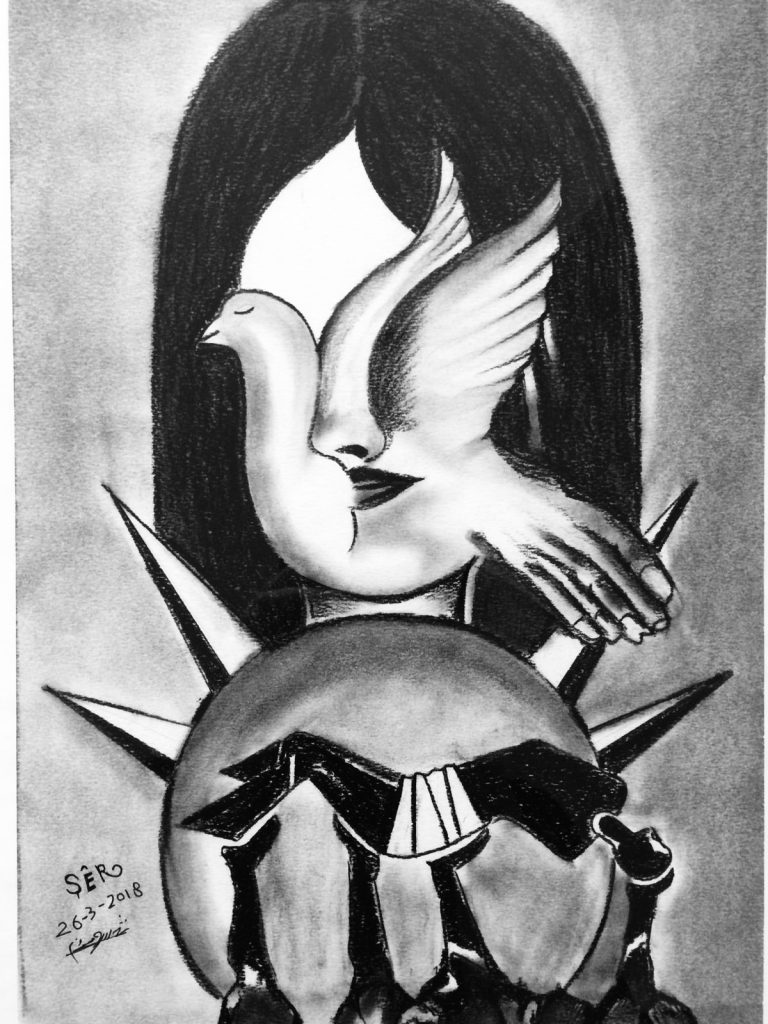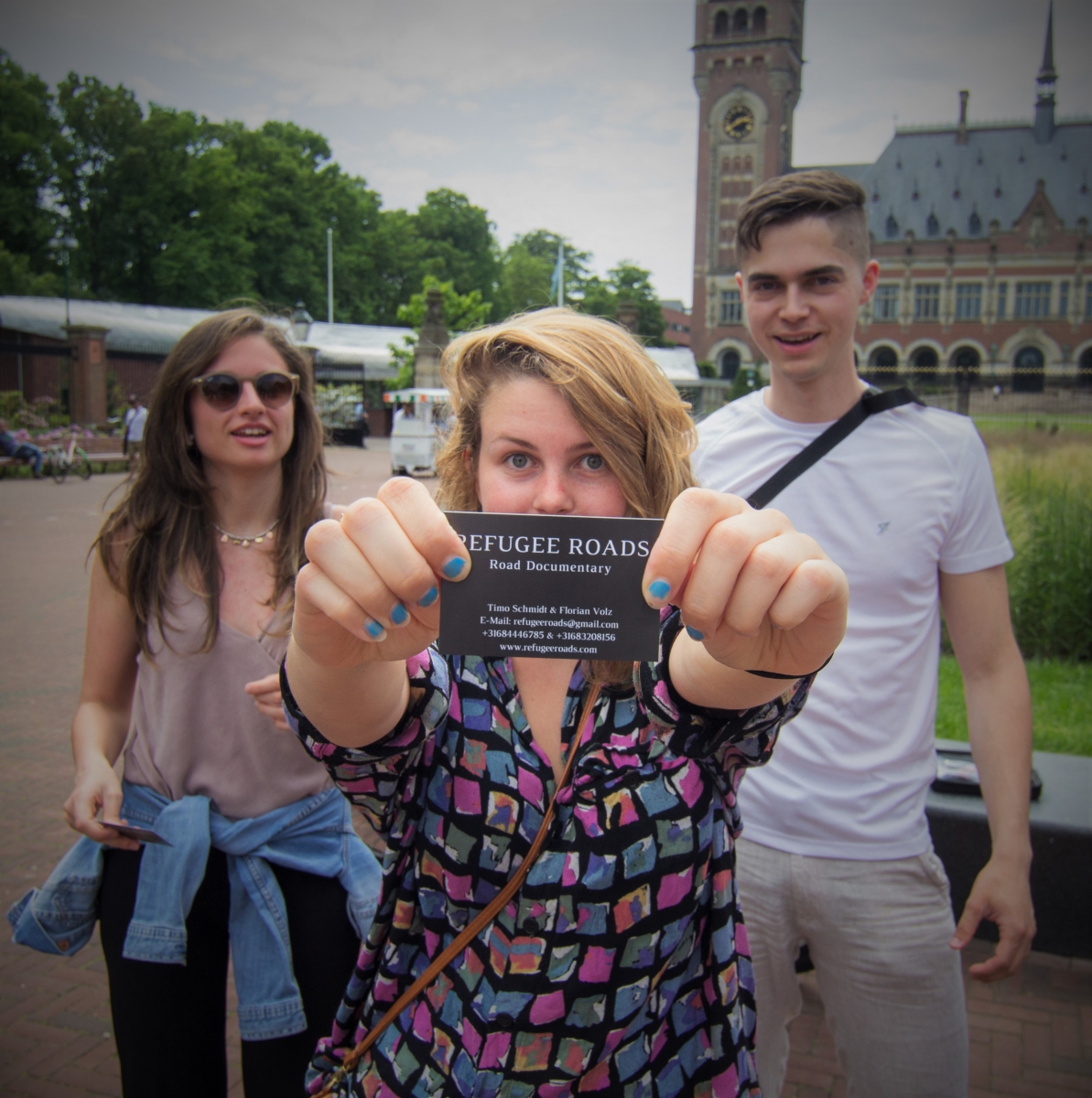Frontex has, first of all, a very long official name: ‘European Agency for the Management of Operational Cooperation at the External Borders of the Member States of the European Union’ And secondly it functions for many within the topic of migration as the symbol for EU border protection. We used our time on Lesvos and focused on exploring the daily operations of this organization.
To start off, we interviewed Izabella Cooper over Skype. Due to her role as a spokesperson of Frontex, she was able to give us an overview of the structure and the mission of Frontex. Instead of being responsible of the European borders per se, they much rather exist to assist border authorities from different EU countries in working together.
“Frontex promotes, coordinates and develops European border management in line with the EU fundamental rights charter applying the concept of Integrated Border Management.” (Frontex website)
Then we had the pleasure of interviewing Tom Giertsen. He is the Commander of the Norwegian Frontex mission in Mytilini on Lesvos. He and his crew use the vessel Peter Henry von Koss to patrol the maritime border between Greece and Turkey. Tom and two other policemen from Norway are responsible for the operation. Captain Lars Helminsen and his two crew members take care of the vessel. In conjunction, they are stationed in Lesvos to control the external maritime border even though, according to Tom, 90 Percent of their work consists of searching and rescuing refugees in Greek waters. Since the start of the mission, which was last fall, they rescued over 5500 people from rubber dinghies and handed them over to the Greek authorities in Mytilini. When patrolling, Tom and Lars have to stay out of Turkish waters since Frontex has no jurisdiction there. Rather, when they spot a suspicious dot on their radar which has not passed the border yet, they inform the Turkish coastguard which then takes care of identifying the object.
Besides the interview, we also requested to join the crew on one of their nightly patrols in order to see for ourselves how the on-the-ground work of Frontex unfolds. However, initially, Tom denied our request. Last time he took a journalist on board he had to bring him back ashore after an hour or so, as it turned out that this journalist was drunk and thus endangered the mission.
Nevertheless, two days after our interview Tom called us and told us how impressed he was with our work. His crew agreed with him when he proposed to take us along. Thus, he asked if we wanted to join them for the upcoming night shift. And obviously, we rescheduled everything else and boarded the vessel the next day!
So on the night of August 8, we charged our cameras, prepared some midnight snacks and then went aboard the boat. We received a safety briefing, the crew welcomed us, and they informed us what to do in case of a pickup. We then sat on the bridge behind Tom and Lars at 22:00 hours when they left the port. For twelve hours we patrolled along the Greek-Turkish maritime border in the south of Lesvos. Tom answered our countless questions with much patience. He explained their two radars and in which way they help them to spot rubber dinghies. The crew showed us their night vision equipment and the machinist even went down to the massive engines in the morning to explain their functioning. Long story short, we got a full overview of how, where, when and first and foremost why the crew does the work that they do. And no, they did not spot a single suspicious dot during the shift that we accompanied them. In fact, they haven’t had a single pickup the three days before either. However, as we learned later on the Portuguese crew in the north of Lesbos did indeed pick up migrants. And the numbers have indeed increased, at least since the EU-Turkey deal seemed uncertain to continue further given the developments after the recent coup attempt in Istanbul.
Yes, Timo and I wondered if we should feel like ‘we missed out on the action’. However, we came to the conclusion that, frankly speaking, we shouldn’t be. Our journey is in the end about depicting reality on the ground and the reality in that night was that there weren’t any refugees out in the south of Lesbos. Our documentary will not include any pictures from capsizing boats and desperate people wearing life vests. We know these realities all too well… After the EU-Turkey deal was signed in late February the number of pickups from the Norwegian crew, as noted in their logbook, went to zero overnight and stayed at a minimum low for weeks to come. Lately, they went up again to about 150 per week. Just keep in mind that this number only concerns the Norwegian vessel. Arrivals in Lesvos overall total at about 60 per night.
Being constantly on the lookout and preparing for the worst while watching the Hellenic and Turkish coast guard play their cat and mouse game along the border (who can cross it briefly without being caught by the other side?), noticing a breathtaking sunrise behind the Turkish coastline and receiving radio messages from the German warship that operates in the area under the flag of NATO is also part of the crew’s job. Nonetheless, since no one knows what the future may bring as there is no comprehensive EU solution in sight, the work of Tom and his crew won’t stop and they will continue to go out on the ocean every night. And if it is ‘only’ to ensure that ‘just’ a few hundred people per month will receive temporary assistance and do not have to risk their lives when crossing Greek waters in unstable rubber dinghies. All the while the pictures that this produces have ceased to be extreme enough to be covered by many international media outlets.
“Work goes on regardless of outer circumstances. We must focus on rescuing the people out there in the sea, not the politics that bring them there in the first place.” – Tom Giertsen
Don’t forget to support us in our crowdfunding campaign.
To be continued…


